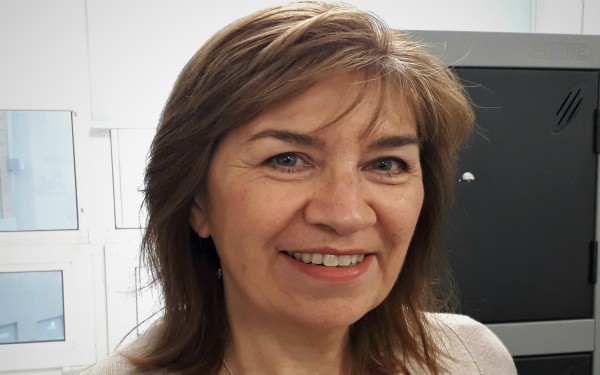Oxfordshire County Council is transforming the way it helps frontline social workers support the children and families.
Led by the deputy director for children’s social care, Hannah Farncombe, Oxfordshire’s family safeguarding plus model aims to improve the main statutory children’s social work services. These services cover the assessment of vulnerable children through to children that are the subject of children in need or child protection plans and those children who first come into care.
Through this model, it is anticipated that staff caseloads are lowered, and social workers are better able to balance the hours they use between record-keeping and working with families.
“What is attractive about this model is it is empowering for both social workers and families,” says Hannah. “It uses a strengths-based approach to encourage collaborative working and gives families more control in making changes”.
Best practice
The model is inspired by an approach pioneered by Hertfordshire County Council in 2015, which has been proven to radically improve outcomes for children and their families while also significantly reducing demands and costs for the county. The model has been independently evaluated as being effective, complimented by Ofsted and is being replicated by at least eight other English local authorities. Key to its success is the initial intensive support provided to both children and the adults in their families, according to a report by Oxfordshire.
The model has involved placing mental health, substance misuse and domestic abuse workers in teams with children’s social workers. This approach is designed to tackle parental behaviours and support children to remain with their families. Oxfordshire will be following much of this model by establishing similar multi-disciplinary teams to work with families.
Merging teams
 Currently in Oxfordshire, the children’s social care process starts with a child being assessed by the children’s and families’ assessment team and then being transferred to the statutory family solutions services. But those two steps will be merged under the new model Oxfordshire is due to launch officially in June 2020.
Currently in Oxfordshire, the children’s social care process starts with a child being assessed by the children’s and families’ assessment team and then being transferred to the statutory family solutions services. But those two steps will be merged under the new model Oxfordshire is due to launch officially in June 2020.
“This means the family safeguarding service will carry out the assessment and intervention within the same team,” Hannah says. “By doing this we aim to reduce the number of times families deal with different social workers. This helps to promote stability and gives both parties a chance to develop stronger working relationships.”
Being able to achieve this involves equipping staff with the right skills and training, which Oxfordshire has already kick-started. Social workers are being trained in motivational interviewing, one of the four key elements of its family safeguarding model. The other three are:
- using a special purpose-built family record that reduces the burden of recording and focuses on live analysis of needs, risks and parents’ capacity to change;
- measuring improvements in adults’ and children’s lives so that the impact of the work is understood for the whole family; and
- ensuring professionals of different disciplines are working together with families, receiving regular group supervision and providing evidence-based interventions.
Less paperwork
The success of the model is based on social workers having reasonable caseloads that enable them to provide rapid and intense help. At the heart of implementing this new model is a desire to support the critical work that social workers do and minimise the bureaucracy associated with the job.
“What we are essentially working to do is invest in the frontline,” says Hannah. “We have secured £5 million of investment via the council in children’s services and a key part of that is to manage caseloads for social workers.”
On average, caseloads are around the 20 mark in Oxfordshire but the aim is to reduce them to around 15. Stepping up recruitment is one of the ways that the council is working to achieve this caseload reduction. They are also keen to bring about time efficiencies for social workers by streamlining record-keeping.
“We estimate on average, social workers spend around 80% of their time on record-keeping and 20% visiting families and children. We are trying to re-balance that so that is more of a 50:50 split,” Hannah adds.
The council plans to establish 22 family safeguarding teams in total, each of which will include six social workers. Embedded in these teams will also be part-time adult service workers.
We are aiming to recruit around 30 children’s social workers over the next six months
“We are aiming to recruit around 30 children’s social workers over the next six months,” Hannah says. “We are very excited to be offering the family safeguarding model to our staff and new recruits, which enables social workers to achieve what they came into this fantastic profession to do. We know that the impact of the model in other authorities has increased worker satisfaction and improved retention rates.
“We are also working with our partner agencies in health, police and voluntary sector to recruit 30 specialist adult workers to be based in the teams helping families deal with domestic violence, substance abuse and mental health.
“Having adult workers located within children’s social services means that help for vulnerable families is available more quickly, and that everyone works together to a whole-family plan which meets children’s needs.”
Co-location and multi-agency
The family safeguarding teams will be housed under the same roof as the early help services to ensure support remains seamless.
In addition to the trio of adult vulnerabilities that challenge so many families, they will have access to support from the police, schools, housing officers and health visitors.
An additional element to the family safeguarding model, which is different to the Hertfordshire model, is Oxfordshire’s effort to improve relationships between county and district councils. The aim is to ensure families have access to the broader range of support services in housing and leisure that are available to them.
Oxfordshire is working with Cherwell District Council (CDC) to offer complementary services such as housing, leisure and community services, which can support the care given to families and children.
“Housing can be a big issue for children services, particularly if they do not have the right supportive framework around them,” says Hannah. “If a social worker already has an established relationship with staff working in the housing department, this can facilitate a speedier resolution to risk of eviction, overcrowding and homelessness.”
Similarly, if social workers have a direct route to accessing the range of free or discounted leisure services through the partnership with CDC, this is a useful service that social workers can pass on to the families and children they support.
“Families that have particular financial challenges and can’t find leisure activities such as swimming that they can do together affordably can take advantage of discounted leisure services CDC offers. Their card scheme gives families access to those services for free or at a reduced cost. It is important that families have the chance to play and have fun together as part of plans to resolve difficulties,” Hannah says.
Community Care Live 2019
To find out more about Oxfordshire’s new family safeguarding plus model, head over to the Business Design Centre on 15 and 16 October where they will be exhibiting at Community Care Live 2019. You will find the team at stand 29, and can register for free for the event here.
Learn more about the innovative ways the council is working to keep families together and prevent placement breakdowns in a seminar on 15 October between 1pm and 2pm. Click here for more information.
There is also a chance to talk with senior managers about the new opportunities available at Oxfordshire. A networking session outlining details of the new model will be staged on 16 October between 11.30am and 12.45pm. Click here for more details.




 Facebook
Facebook X
X LinkedIn
LinkedIn Instagram
Instagram